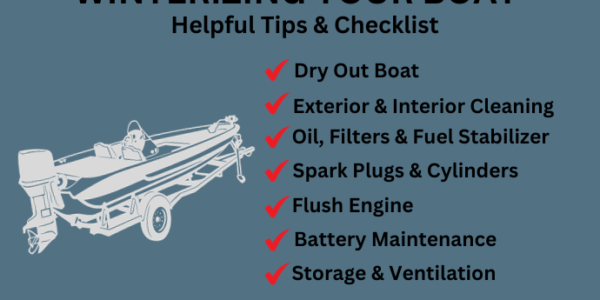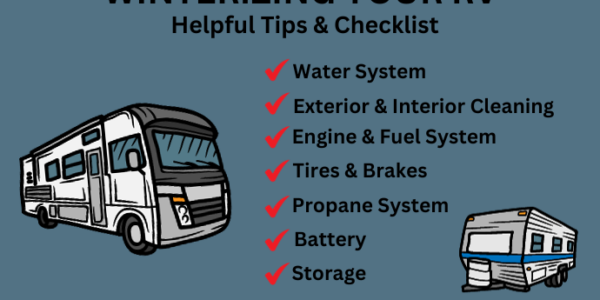Click on the link to jump to the section
- Vehicle storage options
- Preparing your vehicle for storage
- Storing your vehicle indoors
- Storing your vehicle outdoors
- Vehicle maintenance during storage
- Protecting your vehicle from pest
- Monitor your vehicle during storage
- Getting your vehicle out of storage
Purchasing or inheriting a vehicle is an exhilarating and rewarding undertaking. Yes, our cars get us from point A to point B, but for many of us, they are so much more than a method of transportation. To some of us, cars are an extended member of our family. The last thing we want is to have to put it in storage; however, sometimes situations arise that require us to consider car storage solutions.
Whether you’re storing a classic car, protecting your car or truck from harsh weather or simply needing more space in your garage or driveway, you need to know the best way to store a car long-term. This helpful guide will give you all the info you’ll need to keep it in tip-top shape and ensure its value for years to come.
Assess Your Needs & Evaluate Your Car Storage Options
Before deciding on where to store your car, determine how long you’ll need to store it. Will it be short-term, like a few weeks, or long-term, perhaps years? Once you know how long your vehicle will need to be stored, consider its age, condition, and environmental factors. This will help you decide between storing your car in an enclosed storage unit or stored in either covered or uncovered parking.
How To Prepare Your Car For Storage
Once you’ve considered factors such as cost, security, proximity, accessibility and the reputation of your local storage facilities, it’s time to make a decision. And whether you’ve decided to store your vehicle indoors or outdoors, specific maintenance tasks need to occur before you store your car.
- Give your car a thorough interior and exterior cleaning. Check out some handy car-cleaning tips here.
- Change the oil, fill your gas tank and top up all fluids.
- Inspect, inflate and rotate your tires if necessary.
- If you’re storing your car long-term, consider battery maintenance and fuel stabilization.
Tips For Storing Your Vehicle Indoors
To maintain your car’s condition while it’s stored indoors, there are a few factors to keep in mind.
- Choose the right size storage unit for your car. Too big? You’ll be paying too much. Too small? You’ll have cramped conditions and risk accidental scratches or dings.
- Ensure that the unit has adequate ventilation to prevent moisture buildup. Excess moisture can lead to mold, rust and mildew.
- Consider purchasing a high-quality car cover to provide extra protection from dust and debris.
These simple steps can effectively aid in maintaining your vehicle and protecting its value, according to Andrew Kuttow, Editor-in-Chief of lambocars.com, “I remember storing a classic 1965 Mustang in a storage unit over the winter months,” he said. “I made sure to find a climate-controlled storage facility that offered the right level of protection. I followed all the aforementioned steps and, come spring, the car was in excellent condition. It started up without any issues, and there was no damage or degradation to the interior or exterior.”
Outdoor Vehicle Storage Tips
To ensure your vehicle remains safe and in peak condition while being stored outdoors, here are a few factors to consider.
- Find a reputable and secure facility. Ask about surveillance cameras, gates, fences and on-site staff.
- You’ll also want to consider elevating your vehicle on jack stands. This will help prevent flat spots on your tires and reduce strain on suspension components.
- Investing in a sturdy, weatherproof car cover is also essential. This will help protect your vehicle from snow, rain, dust, UV rays and other environmental factors that can cause damage. Check out these top-rated car covers by Popular Mechanics.
Essential Vehicle Maintenance During Storage
Many people make the unfortunate mistake of putting their vehicles into storage and neglecting to care for them. Kuttow recalls, “Once, I overlooked the need for a fuel stabilizer while storing an Audi A4 for several months. Upon attempting to start it up, the car struggled, and we had to flush the entire fuel system. That was a learning experience, reminding me of the importance of using a fuel stabilizer for extended storage periods.”
To ensure the longevity of your car and to avoid costly repairs, make sure you:
- Keep your tires inflated to your car manufacturer’s recommended pressure to avoid flat spots.
- Add a fuel stabilizer (as Kuttow learned to do!) to prevent condensation and fuel degradation. Both can lead to fuel system damage and engine problems.
- Use a trickle charger to keep your battery charged, or disconnect it to avoid drainage and potential damage.
Protecting Your Vehicle from Pests and Critters
If you’re storing your car long-term, especially if you’ve decided on outdoor storage, you need to consider protection from insects, rodents and other pests. Here are some quick tips to avoid unexpected and potentially expensive damage:
- Do a thorough vehicle check and seal up any openings where pests might sneak in.
- Use mothballs, sulfur pellets, dryer sheets or cotton balls soaked in peppermint oil.
- Avoid using a car cover in areas with mice, as rodents love a good hiding spot.
- Remove your tires and raise your car up on jack stands. This will make it much more difficult for pests to find a way into your vehicle.
- Inspect the storage area regularly for signs of pests and inform the staff immediately.
Monitoring Your Vehicle While In Storage
While maintenance is essential when your vehicle is in storage, monitoring your car will help give you peace of mind. Here are some easy things you can do to feel at ease while your car is away from home.
- Check on your vehicle regularly. Do a thorough inspection and look for any signs of damage, leaks, or infestations.
- Start the car’s engine periodically, and if possible, take your vehicle for a drive every few weeks to prevent any deterioration.
- If you have any serious concerns, consider using a security camera or vehicle monitoring system.
Getting Your Car Out Of Storage
When the day arrives that you can drive your car out of storage, there are a few things that will help make the transition smoother.
- Give your vehicle a thorough cleaning and remove any coverings or cloths used to block up openings.
- Inspect your vehicle inside and out to make sure everything is as it should be.
- Reconnect your battery, check your tire pressure and inflate them if necessary.
- If any other maintenance tasks need to be performed, take care of them as soon as possible.
Whether you’re storing your vehicle for the short-term or long-term, there are some simple ways to preserve its value. Ensure that your car is cleaned, maintained and protected from the elements – and don’t forget the fuel stabilizer. Additionally, if your storage facility offers electrical outlets in their storage units, consider using a trickle charger the battery.
Lastly, when in doubt, consult a professional regarding storage requirements for your specific vehicle type. By following these simple car storage tips, you can confidently store your vehicle, knowing it will be well-preserved and ready for the road.
Ready to find car storage near you? Simply search on SelfStorage.com by zip code or city name to find the right storage option for you!




